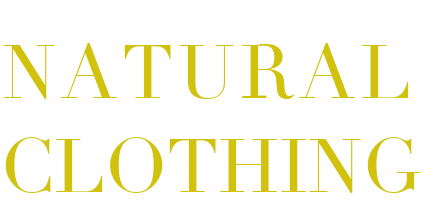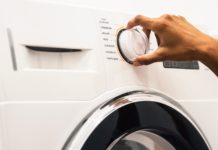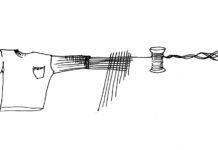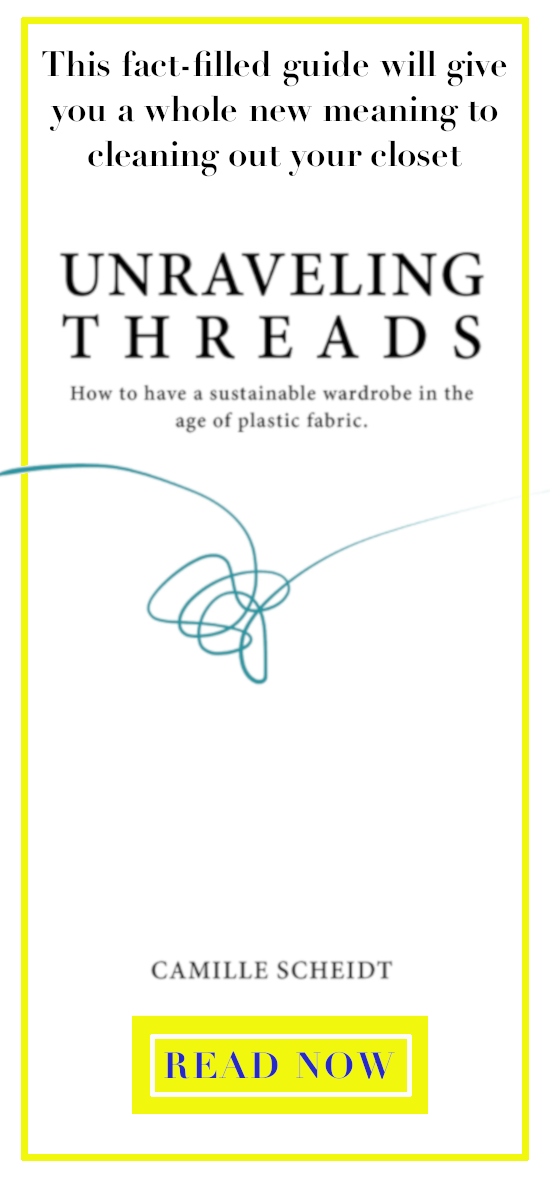Is dry cleaning sustainable? TLDR: no. The process of dry cleaning is neither dry nor clean. Chemicals used in conventional dry cleaning are extremely dangerous to our health and the environment. To begin the dry cleaning process, clothing is soaked in a chemical solvent. The most commonly used chemicals in dry cleaning include: perchloroethylene (also known as perc, PCE, or tetrachloroethylene), siloxane, trichloroethane, petroleum spirits, and hydrocarbon solvents. Let’s first take a look at the most common solvent – perc.
no perks to ‘perc’
Perc is an especially harmful chemical to our health and environment. It’s also the most popular solvent in dry cleaning. The chemical is a synthetic volatile organic* compound. This means it is a manmade chemical that easily and quickly becomes vapor (or gas) at room temperature. Once the solvent vaporizes, it is easily inhaled. Both dry cleaning employees and customers are directly at risk of breathing in the chemical perc.
Perc remains in clothing that is dry cleaned. The levels of perc in the clothing accumulates with each cleaning process. A study found that if you were to put four freshly dry cleaned sweaters in your car and step into the grocery store for an hour on a warm day, you would return to a car that was well exceeding the ‘safe’ limit of perc exposure outlined by OSHA. Check out more in this great study spearheaded by a 15 year old.
Further, perc pollution is far reaching. Perc pollutes air and soil far from dry cleaning establishments. The contaminant has been detected in wells and land across the US.
the effects of perc on our health
The effects of perc on our bodies is severe. Minimal exposure to perc can cause fluid build up in lungs, difficulty speaking and walking, headaches, drowsiness, dizziness, nausea, and irritation of skin and the respiratory system. If a person’s exposure to perc is at a high level, even for a short time, the chemical can cause unconsciousness and death.
While prolonged exposure to perc can result in damage to the central nervous system, kidneys, and liver. It is recognized as a “probable” human carcinogen and linked to cases of cervical cancer, bladder cancer, esophageal cancer, and non-Hodgkin lymphoma. The EPA labelled perc a toxic air pollutant. The state of California banned the use of the chemical after examining its health and environmental effects. In 2007, 1 in 10 wells in California tested positive for perc contamination. Unfortunately, the California ban will not take full effect until 2023. And in the meantime, perc is still widely used.
dry cleaning alternatives
If your clothing’s care tag suggests dry cleaning, you can most likely wash the piece at home gently by hand. Just remember to spot check all delicate or questionable pieces before doing a full wash. Check out how to care for your silk items here. There are also two ecofriendly options on the dry cleaning market: liquid carbon dioxide cleaning and wet cleaning.
liquid carbon dioxide cleaning
Liquid carbon dioxide cleaning uses liquidized carbon dioxide as a solvent instead of perc. The naturally occurring gas is liquidized when high pressure is applied to it. Carbon dioxide is a greenhouse gas, but no new carbon dioxide is created by this method. Most carbon dioxide used by cleaners is reclaimed as a by-product from other manufacturing processes. In addition, most carbon dioxide is reclaimed for reuse in the next cycle. Because of this repurposing, the carbon dioxide is an abundant and cheap resource. Further, the solvent is nontoxic and nonflammable. This method is very effective for removing dirt, fats, and oils from delicate fabrics.
However, the dry cleaning industry is showing some push back to this method. The initial cost of a liquid carbon dioxide cleaning machine is more expensive than a perc machine. Fortunately, this method quickly pays for itself as operating costs are lower. This is because there are no additional costs for proper disposal of toxic chemicals and the solvent is extremely affordable.
wet cleaning
Wet cleaning uses water as a solvent with specialized soaps and conditioners in computer regulated washing and drying machines. The process involves identifying the type of stain and its PH level. This allows cleaners to effectively remove the stain without using toxic solvents. The computerized machines regulate temperature and motion. The machines rotate sometimes as few as 6 times per minute. Whereas a home washing machine can have a few dozen rotations per minute.
Wet cleaning does consume water, but less water than conventional dry cleaning. Dry cleaning uses large amounts of water in the solvent recovery process. Wet cleaning can does not involve this water intensive step. Wet cleaning is decidedly the most energy efficient method of gentle cleaning. Equipment and operating costs of wet cleaning are also lower than conventional dry cleaning costs. Wet cleaning eliminates the health, safety, and environmental dangers of dry cleaning.
*when organic isn’t good
Many dry cleaning services can be misleading by advertising ‘organic’ or ‘green’ cleaning methods. After all, perc is a volatile organic compound. Isn’t organic good? In this case, ‘organic’ is used in the chemical sense, meaning it contains carbon. Hydrocarbon cleaning is a petroleum based cleaning process and is often advertised this way. It is extremely harmful to the environment. For the definition of the good ‘organic’ check out our page on cotton, where we discuss conventional and organic methods of cotton production.
Another misleading dry cleaning alternative is the Green Earth cleaning method. The Green Earth method uses siloxane (a silicone based solvent) instead of perc. The creator of Green Earth performed a study in which female rats exposed to Green Earth had an increased risk of uterine cancer. Studies also found that Green Earth poses a potential threat to the liver.















